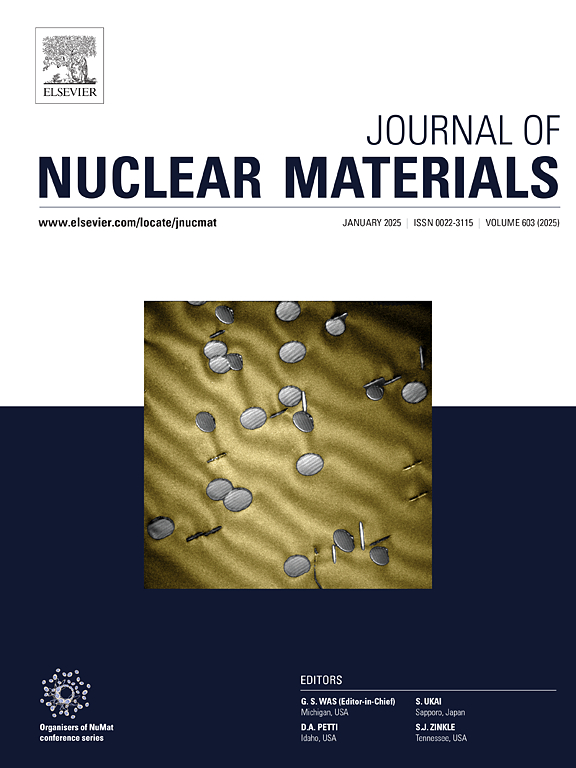Micromechanical response of SiC-OPyC layers in TRISO fuel particles
IF 2.8
2区 工程技术
Q3 MATERIALS SCIENCE, MULTIDISCIPLINARY
引用次数: 0
Abstract
Tristructural isotropic (TRISO)–coated particle fuel is a proposed fuel for multiple advanced reactor concepts. The performance of the particle depends on whether the silicon carbide (SiC) layer remains intact to prevent the release of metallic and gaseous fission products. Mechanical fracture of the SiC layer is a potential failure mode under various fuel configurations and operating environments, including the potential transmission of matrix-originating cracks through TRISO particles. This study uses instrumented indentation techniques on cross-sectioned surrogate particles to examine the mechanical stability of the critical interface between SiC and the outer pyrolytic carbon (OPyC) layer. The observed behavior at the interface is rationalized by examining the radially dependent fracture behavior of the SiC layer and performing a numerical analysis to quantify the residual stresses that develop during the processing and cross-sectioning of the as-fabricated particle. Characterizing the SiC-OPyC interface of surrogate TRISO particles using nanoindentation provides unique insight into the interface's room-temperature residual stress and mechanical stability. The modeling efforts were used to investigate the experimental procedure further, and the results are presented herein to validate this fuel form's potential mechanical failure modes.
求助全文
约1分钟内获得全文
求助全文
来源期刊

Journal of Nuclear Materials
工程技术-材料科学:综合
CiteScore
5.70
自引率
25.80%
发文量
601
审稿时长
63 days
期刊介绍:
The Journal of Nuclear Materials publishes high quality papers in materials research for nuclear applications, primarily fission reactors, fusion reactors, and similar environments including radiation areas of charged particle accelerators. Both original research and critical review papers covering experimental, theoretical, and computational aspects of either fundamental or applied nature are welcome.
The breadth of the field is such that a wide range of processes and properties in the field of materials science and engineering is of interest to the readership, spanning atom-scale processes, microstructures, thermodynamics, mechanical properties, physical properties, and corrosion, for example.
Topics covered by JNM
Fission reactor materials, including fuels, cladding, core structures, pressure vessels, coolant interactions with materials, moderator and control components, fission product behavior.
Materials aspects of the entire fuel cycle.
Materials aspects of the actinides and their compounds.
Performance of nuclear waste materials; materials aspects of the immobilization of wastes.
Fusion reactor materials, including first walls, blankets, insulators and magnets.
Neutron and charged particle radiation effects in materials, including defects, transmutations, microstructures, phase changes and macroscopic properties.
Interaction of plasmas, ion beams, electron beams and electromagnetic radiation with materials relevant to nuclear systems.
 求助内容:
求助内容: 应助结果提醒方式:
应助结果提醒方式:


